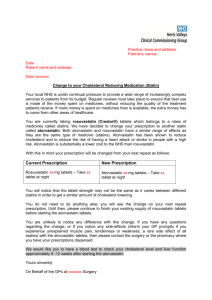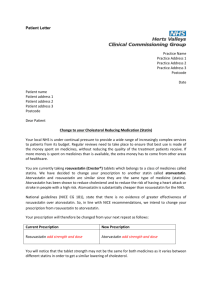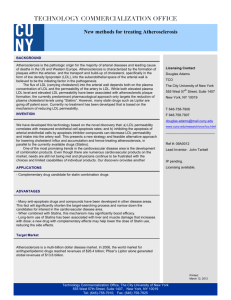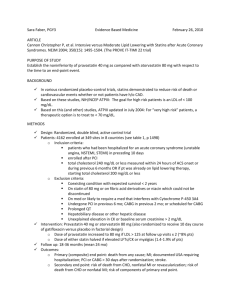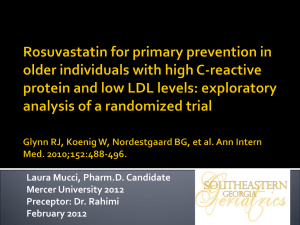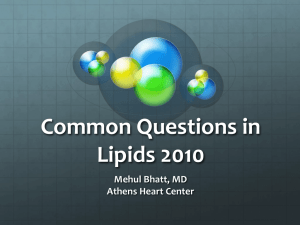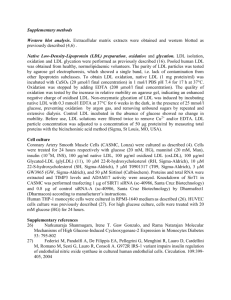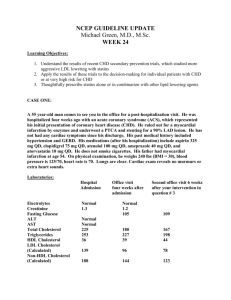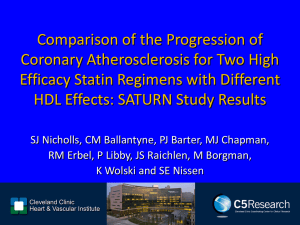New England Journal of Medicine.
advertisement
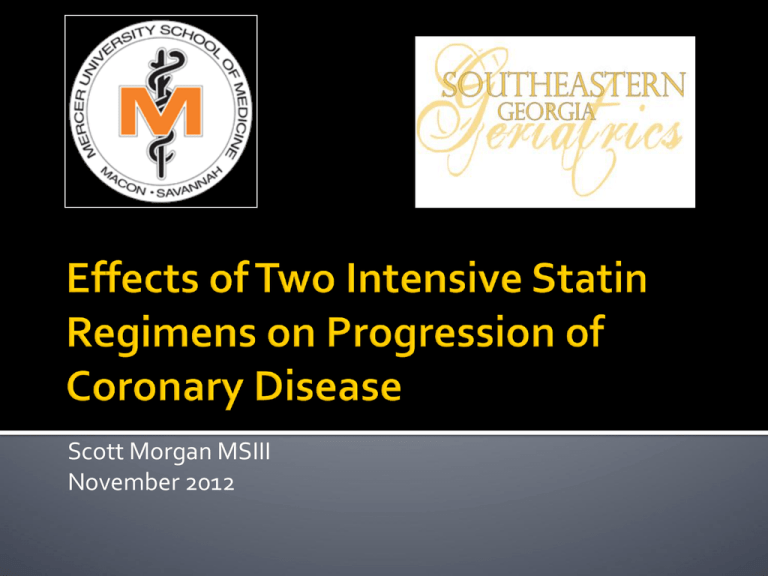
Scott Morgan MSIII November 2012 AstraZeneca Pharmaceuticals Designed by Cleveland Clinic Coordinating Center For Clinical Research Previous studies Repeatedly show favorable LDL effects from statins Slow progression of CAD Might even lead to CAD regression Comparison of LDL lowering capabilities between rosuvastatin and atorvastatin Lack of randomized clinical trials showing efficacy for rosuvastatin vs atorvastatin in CAD modification leading to changes in clinical outcomes Tested the 2 most potent statins for slowed progression or reversal of atherosclerosis in coronary arteries Statins Inhibit hydroxymethylglutaryl (HMG) CoA reductase Block rate-limiting step in cholesterol synthesis Major effect is from increased hepatic LDL receptors Average 20-40% decrease in LDL Can raise HDL by 10% Most effective statins for lowering LDL Atorvastatin Yield average decrease in LDL approaching 50% Rosuvastatin Yield average decrease in LDL exceeding 50% Greater increase in HDL than atorvastatin Randomized double-blind Treatment with atorvastatin 80 mg daily or rosuvastatin 40 mg daily Serial intravascular ultrasonography of coronary arteries Baseline at beginning of study After 104 weeks of treatment 1039 patients 18-75 years old At least one vessel with 20% stenosis and a target vessel for imaging with <50% stenosis Not treated with statins in preceding 4 weeks – LDL >100 mg/dL If treated – LDL > 80 mg/dL Exclusions: intensive lipid-lowering therapy >3 months in last year Uncontrolled HTN Heart failure Renal dysfunction Liver disease When all patients in a study are included in the final results even when they are lost to follow up Prevents non-randomized loss of participants Without this number there can be artifact that makes a variable appear more/less effective Using this study as a hypothetical example If 50 from the rosuvastatin that would have had a large LDL decrease drop out 35 had decreased LDL levels during the trial Results of the study will not show how efficacious rosuvastatin therapy Sample size is smaller Smaller percentage of patients show results ▪ Reality: 250/520 = 48% ▪ With ITT: 235/520 = 45% ▪ Without ITT: 200/470 = 43% LDL decrease will appear smaller than reality Missing data Lack of adherence to methods used for experiment In example: What is 25 of the 35 would have seen an increase in LDL levels if they had stayed in? Rosuvastatin and atorvastatin caused a significant decrease in atherosclerotic plaque size Significant difference in regression of total atherosclerotic volume between medications Difference between percent atheroma volume was not significant Patients can have a decrease in coronary atherosclerosis when using rosuvastatin or atorvastatin Reduction in atherosclerotic plaques is not significant enough to justify one over the other Larger decrease in LDL and increase in HDL with rosuvastatin during study Did not use ITT Thought the groups were still randomized and unaffected Not ethically possible to measure disease progression in placebotreated patients Did not look at asymptomatic patients Did not look at alternative methods vs statins Some newer methods of evaluating atherosclerotic plaques might be more accurate Funded by pharmaceutical company Rating: IIa Nicholls, Stephen J. et al. Effect of Two Intensive Statin Regimens on Progression of Coronary Disease. New England Journal of Medicine. 2011; 365:2078-2087. Dec 1, 2011
